
The signs of sickly plants – wilted leaves, discolored foliage, malformed and stunted growth – are like a silent plea for help. If every leaf tells a story, this one would be saying the plants aren’t all right.
Correctly diagnosing plant problems can be a challenge.
There are numerous potential stressors out there – pests, pathogens, suboptimal cultural conditions, malnutrition – that frequently overlap, and many symptoms of different issues can look exactly alike. Oftentimes, more than one factor is contributing to the plant’s decline.
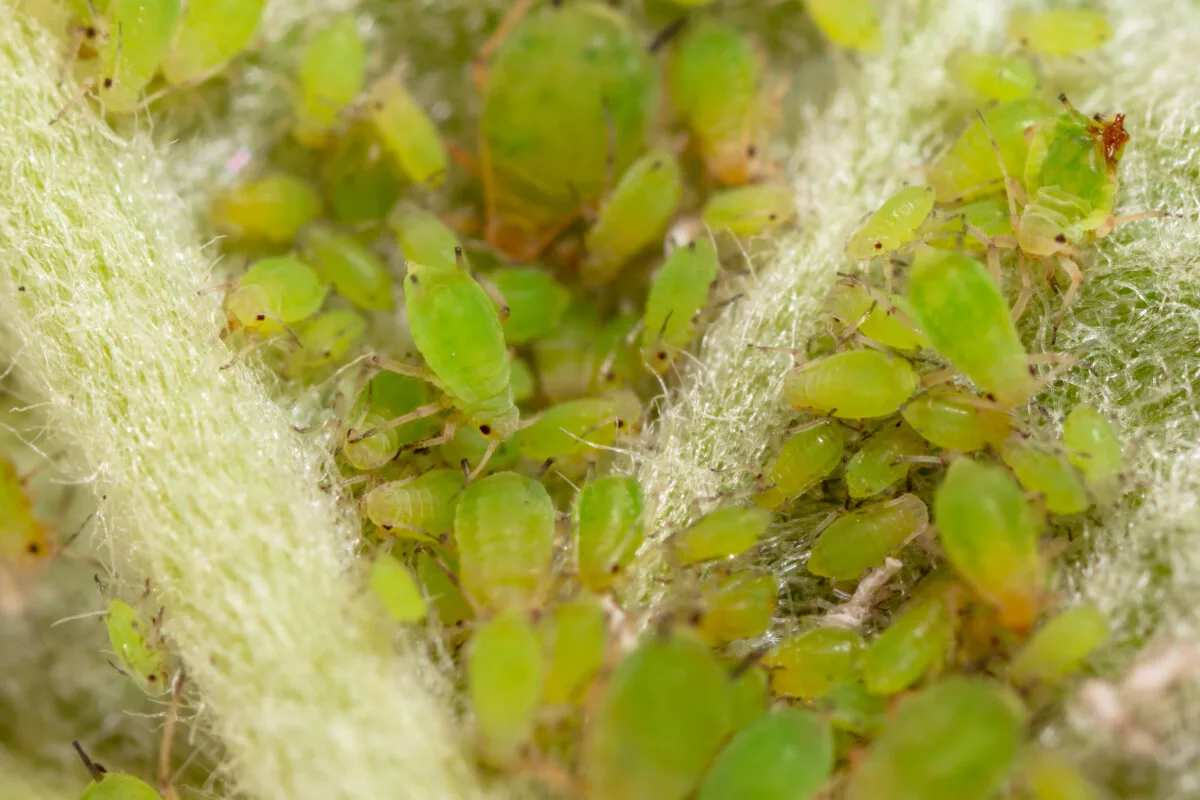
Take, for instance, an aphid infestation. Weakening and disfiguring plants by sucking up their sap, aphids can infect plants with a slew of viruses, and the honeydew they produce is attractive to black sooty mold. To revitalize plants, you would need to take on the pest first to have any hope of treating the pestilence it wrought.
At least aphids are easy to see and identify. Some problems are less visible and obvious, like the classic symptoms of interveinal chlorosis. This yellowing between the veins of leaves is usually attributed to an iron deficiency. However, it’s just as likely that there is plenty of iron in the soil, but its uptake is prevented by high pH, waterlogging, compaction, or excessive amounts of phosphorus, zinc, copper, or manganese.
With so many variables, remedying ailing plants will require unleashing your inner diagnostician. And like a good little plant detective, you’ll have to pay attention to detail and be willing to follow different threads, wherever they may lead.
5 Questions to Ask When Plant Problems Manifest
Before we jump to the conclusion that poor growth is a nutrient deficiency, let’s take a systematic approach and eliminate other possible causes of unhealthy-looking plants.
1. Is the plant newly transplanted?
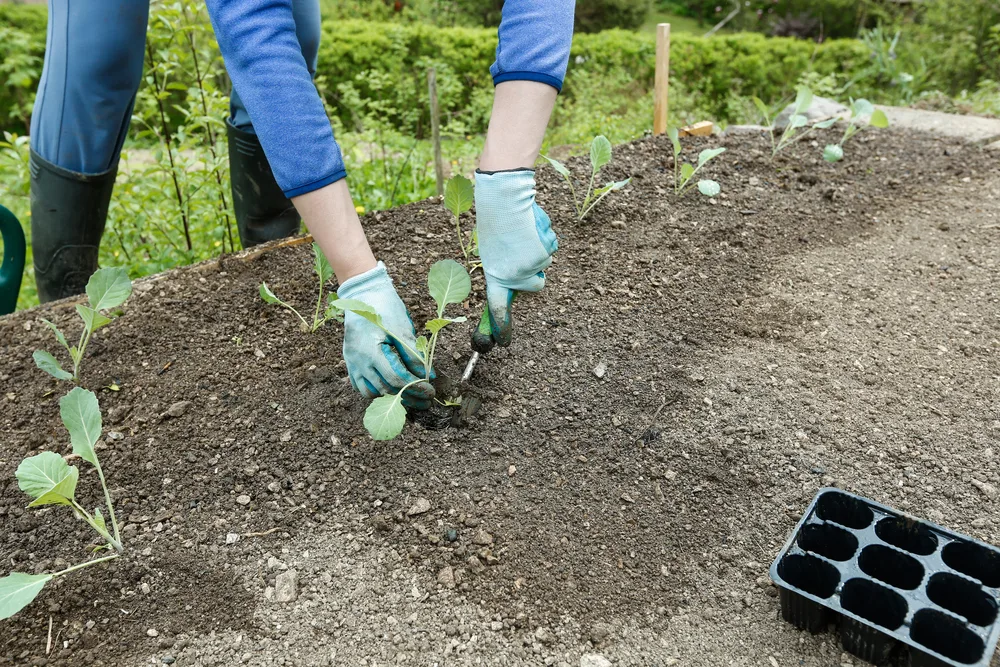
New plantings – particularly those in the category of trees, shrubs, and perennials – need a season or two of root growth to become established in their new home.
Container-grown plants have a small root ball. If the soil dries out before roots can grow into the surrounding earth, plants will quickly begin to fade. Give recent transplants frequent watering to keep them looking healthy up top and encourage expanding root systems below.
2. What’s the weather been like?
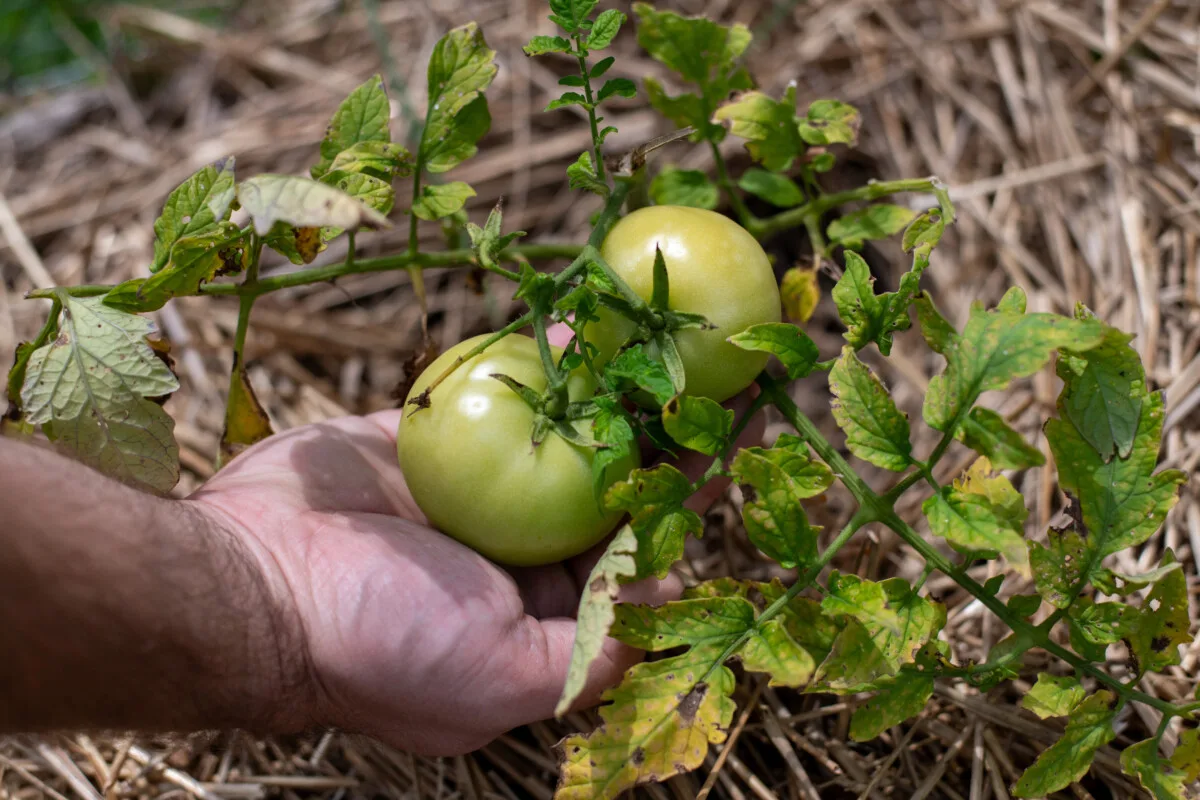
Extreme heat, long periods of drought, unseasonably cool temperatures, or high amounts of rainfall can certainly be the reason your plants are sagging.
Despite all these things being outside our control, we can be proactive when the weather gets weird. Having a few supplies at the ready to protect plants from cold and heat can make all the difference. Plan ahead and plant up a rain garden for when it pours, and learn how to be more water-wise when it doesn’t.
3. Is there a pattern?
Is one plant affected, or are several plants showing the same symptoms? Are the plants all in the same area? Or is the problem occurring in other parts of the garden too?
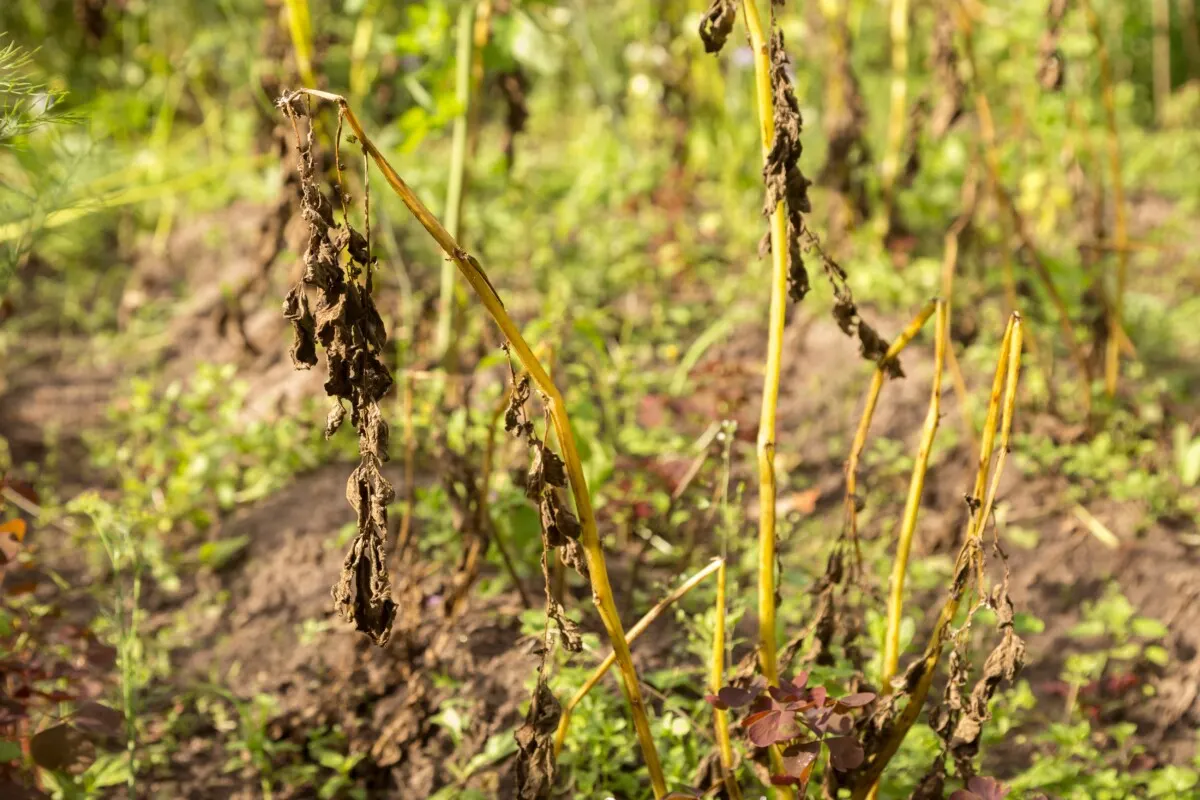
When groups of different types of plants at the same site are looking unwell, it can indicate that the cause is environmental. If damage is limited to a particular plant species, it might be living organisms on the attack.
4. Are there pests or other living organisms present?
Do a thorough visual inspection of the plant, checking the tops and undersides of leaves, stems, stalks, bark, flowers, and fruit.
Do you see insects or traces of pest activity, like eggs, webbing, cocoons, or nibbled leaves or stems?
What about other life forms? Fungal pathogens can manifest in fuzzy threads or powdery coatings. Plant surfaces affected by bacterial disease typically appear slimy or wet.
5. Is the cause environmental?
Environmental stressors make plants look unhealthy overall. Slow and stunted growth, yellowing and browning foliage, and dieback or leaf drop are all indications the plant is unhappy about its environment.
Light: Too much or too little sunlight may turn leaves yellow and reduce growth.
Temperature: Heat stress causes plants to droop, foliage to curl, and leaf tips to scorch. Cold injury, on the other hand, results in wilting, leaf discoloration, and tissue death.
Soil texture: Sandy soils drain too quickly and are prone to moisture and nutrient loss through run-off. Clay soils may be heavy and lack drainage, resulting in waterlogging. Soils that are too dry or too wet display the same symptoms in plants: yellowing foliage, shedding of leaves, and wilt.
Soil pH: Most plants can only absorb nutrients in slightly acidic to neutral soils with a pH between 5.5 and 7.0. Yet, acid-loving plants, like blueberries and azaleas, require a low pH of 4.0 to 5.0 to be at their best.
Nutrient toxicity: Over-fertilized plants can look nearly identical to under-fertilized plants, with yellow or browning leaf edges, slow growth, wilting, and the shedding of leaves, flowers, and fruit. Toxicity is more of a risk when using quick-release synthetic fertilizers than slow and gentle organic amendments like compost and leaf mold.
Nutrient deficiency: Nutrient deficiencies manifest as yellowing, stunting, and death of the old growth and the new. Depending on the lacking nutrient(s), symptoms range from leaf discoloration (speckled, mottled, striped) to malformed growth (curling, cupping, misshaped) and necrosis (dying leaf tips, margins, and terminal buds).

Investigate Nutrient Deficiencies Last
Unlike pests, diseases, and even soil texture, we can’t see our nutrient levels and monitor them in real-time. With so many overlapping symptoms, what looks like a nutrient deficiency could actually be a drainage issue.
Fertilizing when nutrients are already plentiful in the soil will do plants more harm than good.
Beyond the upper limits, nutrients are toxic to plant life. An excess of one creates an imbalance that can halt the uptake of others. When the true cause of sick plants is a pest or pathogen, applying fertilizers will only worsen symptoms and possibly accelerate the plant’s demise.
Don’t kill your plants with kindness. Eliminate all other possible causes of plant problems before dosing the soil with more nutrients.
How to Identify & Fix 14 Nutrient Deficiencies in Plants
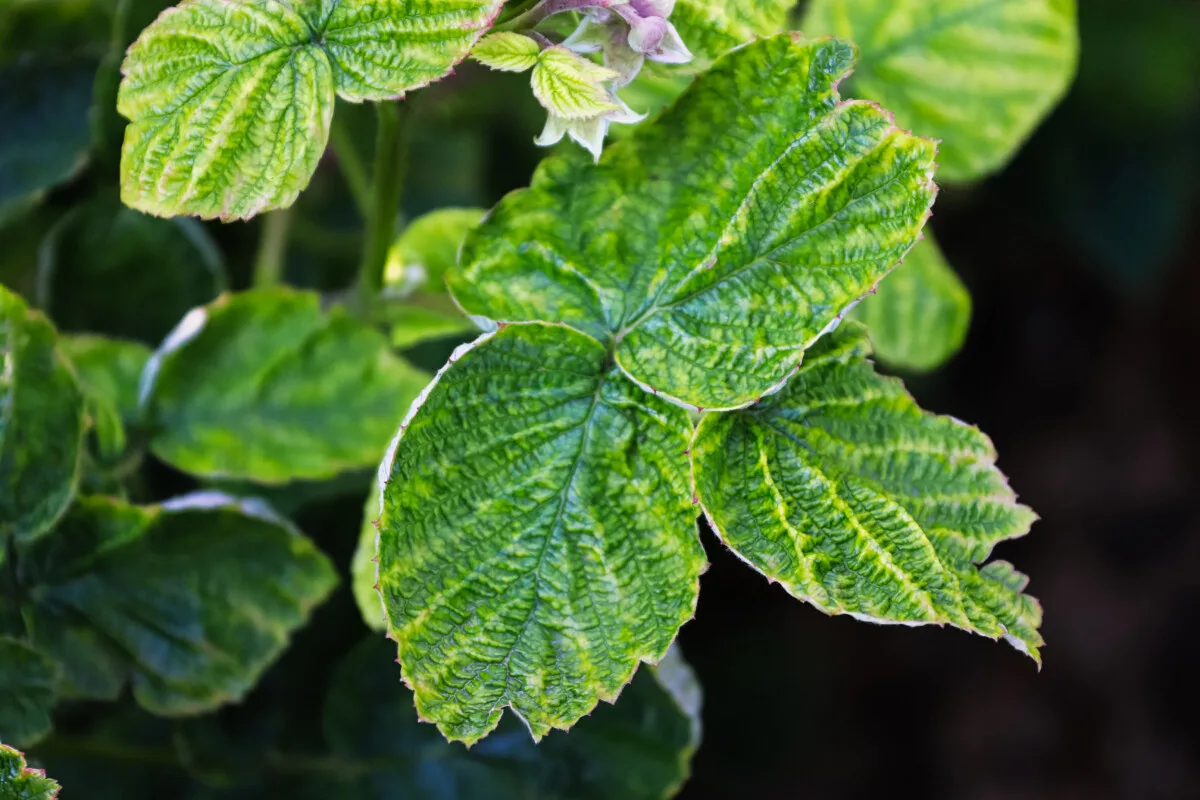
You’ve ruled out pests and diseases. You’re reasonably certain your soil texture is top-notch. The prevailing temperatures haven’t been hitting extremes. And you didn’t play fast and loose with the fertilizer all season long. Now we can begin to investigate nutrient deficiencies.
There are more than 90 plant nutrients so far identified, 17 of which are essential for healthy plant growth. Some species need more, and some need less, but every plant will need all seventeen to successfully complete its life cycle.
The first three are oxygen, carbon, and hydrogen. Plants obtain these elements from air and water. As long as the soil is porous, drains well, and holds moisture, we don’t need to worry about providing these.
Plants receive the remaining 14 from the soil, which is very much in our purview. Plant nutrition is divided into three groups – primary macronutrients, secondary macronutrients, and micronutrients – based on the amount required for plant growth. No one nutrient is more important than the rest. All are equally vital for healthy plants and high yields.
Primary Macronutrients
The big three – nitrogen, phosphorus, and potassium – are the nutrients gardeners are most familiar with. As primary macronutrients, larger amounts of NPK than other nutrients. For plants to grow and develop normally, these nutrients should be replenished frequently.
1. Nitrogen (N)

Nitrogen is essential for photosynthesis – the process plants rely on to convert sunlight to the energy needed to fuel growth. Plants that have access to nitrogen develop a deep green color and exhibit vigorous branching and foliage.
Symptoms of nitrogen deficiency: Plants are not vigorous, and upper leaves are a lighter shade of green. Older leaves at the bottom of the plant turn yellow or light brown before dropping off.
The fix: As a general practice, amending soil with a few inches of compost or aged manure in spring will supply plants with enough NPK to last the rest of the season. For a quicker fix, fertilize plants with high-nitrogen fertilizers like blood meal or diluted urine.
2. Phosphorus (P)

Phosphorus is responsible for root growth, seed development, and flower and fruit production. Having lots of phosphorus available encourages rapid growth of shoots and root tips, improves crop quality, and provides disease resistance.
Symptoms of phosphorus deficiency: Slow, weak, or stunted growth with poor fruit set. Older leaves turn dark green or blue-green, transitioning to a reddish-purple tint.
The fix: Bone meal is a rich source of phosphorus, with an average NPK of 3-12-0.
3. Potassium (K)

Potassium performs several vital functions. It activates enzymes, regulates metabolism and assists with the movement of water, nutrients, and sugars in plant tissue. Potassium is a key contributor to early plant growth, stem strength, disease resistance, and drought hardiness, and it improves the flavor, size, and color of fruit.
Symptoms of potassium deficiency: Older leaves are yellow with green veins (interveinal chlorosis), have scorched tips and margins, and many brown spots. Overall growth is slow, and stems and shoots appear weak. You will notice reduced fruit size and yields.
The fix: Use wood ash or potash to increase potassium levels in your soil.
Secondary Macronutrients
The next three nutrients – calcium, sulfur, and magnesium – are just as essential for healthy growth. These secondary macronutrients are no less important. Plants require them to grow big and strong, too, only in lesser quantities compared with primary macronutrients.
4. Calcium (Ca)

Calcium not only promotes root growth, improves soil structure, and assists with the uptake of other nutrients, it helps plants resist disease and heat stress as well. Its role in cell wall thickness ensures fruits have firm flesh.
Symptoms of calcium deficiency: Younger leaves are distorted, irregularly shaped, or ragged looking. There is brown spotting and scorching, curled margins, and leaf tips that hook downwards. Blossom end rot afflicts tomatoes, eggplant, peppers, zucchini, or cucurbits.
The fix: Composed of 95% calcium carbonate, eggshells are an easy solution for calcium problems in the garden.
5. Magnesium (Mg)

Magnesium is a major constituent of the green pigment in chlorophyll, which plants need to absorb energy from sunlight. Aside from assisting in photosynthesis, it allows plants to use nitrogen efficiently, moves sugars around plant tissues, and helps with reducing plant stress.
Symptoms of magnesium deficiency: Affecting older leaves initially, foliage has interveinal chlorosis that becomes mottled to reddish, with necrotic spotting. Leaf tips and margins appear cupped, curling inward. Less common than other nutrient deficiencies, magnesium is more frequently lacking in acidic soils or soils with high amounts of potassium or calcium.
The fix: To rectify a magnesium deficiency, use Epsom salt.
6. Sulfur (S)

Sulfur promotes dark green leaf color, root growth, and seed production. It’s also helpful for increasing a plant’s cold resistance.
Symptoms of sulfur deficiency: Mimicking a nitrogen deficiency, younger leaves are an even shade of pale green to light yellow, without any spots. Plant stems may be stiff, thin, or woody. Sulfur deficiency is common in sandy soils that are low in organic matter and receive moderate to heavy amounts of rainfall.
The fix: Sulfur is abundant in rich organic matter like compost and animal manure.
Micronutrients
While macronutrients are needed in relatively large amounts, only trace amounts of micronutrients are required for plants to thrive. No less vital than other nutrients, a lack of micronutrients will have a significant impact on plant growth and productivity.
7. Boron (B)

Boron influences root growth and the transport of sugars around the plant, and it plays an important role in plant reproduction. It promotes pollen germination and the formation of the pollen tube, both of which are crucial for the proper development of fruit and seeds.
Symptoms of boron deficiency: Yellowing of younger leaves and distorted, brittle, thickened, and curling foliage. Plants are stunted, and growing points (terminal buds) die back. Flowers may fail to form at all, and the ones that do are misshapen. It’s often accompanied by several plant-specific diseases, such as heart rot in sugar beets and cork spot in apples.
The fix: Sprinkle sodium borate (Borax) at a rate of 1 tablespoon per 100 linear feet of garden soil.
8. Copper (Cu)

Trace amounts of copper in the soil are needed for photosynthesis, protein production, water regulation, and efficient nitrogen uptake. Copper also improves the color and flavor of fruits and vegetables.
Symptoms of copper deficiency: Brown discoloration and chlorosis in younger leaves, along with delayed maturity and stunted growth. Copper deficiencies are more common in sandy and alkaline soils, as well as beds heavily amended with animal manure.
The fix: Since copper sulfate is toxic to birds, fish, and aquatic life, we recommend using gentler amendments such as compost or leaf mold for increasing copper levels in soil.
9. Chloride

Chloride, formed from the element Chlorine (Cl), has a role in photosynthesis, influencing the opening and closing of leaf stomata, so air and water are exchanged between the leaf surface and the atmosphere. It’s an important part of plant water management, ensuring leaves and other tissues have adequate water content.
Symptoms of chloride deficiency: The wilting and yellowing of younger leaves. Necrotic spots are common, with abrupt boundaries between living and dead tissue.
The fix: Chloride is present in the atmosphere and in rainwater, making deficiencies somewhat rare – but not impossible. As it’s easily washed away in sandy soils, add more organic matter to help hold chloride in place.
10. Iron (Fe)

Iron is a core part of many plant functions, from photosynthesis to respiration to metabolic processing. Most visibly, it has an essential role in creating and maintaining chlorophyll so plants grow lush green leaves.
Symptoms of iron deficiency: The classic sign is interveinal chlorosis on younger leaves, proceeding to the newest growth being white. In severe cases, lack of iron can cause malformed leaves with brown margins, as well as leaf, bud, and fruit drop.
The fix: Iron is naturally plentiful in soil, but it becomes inaccessible to plants in high-pH environments. Applying organic matter will act as a pH buffer and help to correct drainage and compaction issues that can also interfere with iron uptake.
11. Manganese (Mn)

Manganese assists with photosynthesis and is an active participant in several biochemical processes. It influences the uptake, transportation, and utilization of nitrogen, phosphorus, and calcium. Manganese activates enzymes that have a protective effect against drought, cold temperatures, salt damage, and soil-borne and fungal diseases.
Symptoms of manganese deficiency: Plants commonly exhibit interveinal chlorosis on younger leaves. Although it resembles an iron deficiency, the color transition is smoother, with less of a sharp contrast between the yellowing leaves and green veins.
The fix: Poor drainage, high pH, and an excess of iron in the soil are the most likely culprits preventing manganese uptake. To increase manganese (along with several other micronutrients), amend beds with leaf mold.
12. Molybdenum (Mo)

Molybdenum is necessary for the healthy uptake of nitrogen by plants. Plant enzymes require molybdenum to convert nitrogen – first to nitrates and then to ammonia – before it becomes available to plants. Some soil microbes need a steady diet of molybdenum to perform nitrogen fixation around legumes.
Symptoms of a molybdenum deficiency: Because of its relationship with nitrogen, molybdenum deficiencies look like nitrogen problems. Older and middle leaves turn light green to yellow. Leaf margins may roll inward and display necrotic spots. Overall growth is stunted, with diminished flowering and fruit set.
The fix: Molybdenum is released over time from rocks and minerals and is found naturally in most soils. Plants only need tiny amounts of it for normal nitrogen synthesis. Sandy soil, rainy conditions, and low pH can interfere with uptake. Add more organic matter or apply seaweed extract to correct deficiencies.
13. Zinc (Zn)

Zinc is involved in several vital plant processes, serving as a co-factor in photosynthesis, respiration, and DNA synthesis. It’s critical for the formation of auxins and other growth hormones that are responsible for vigorous branching and long stems.
Symptoms of zinc deficiency: Early signs are chlorosis along the length of leaves, between the edge and the mid-rib, that look like stripes. Discoloration may be mottled, pale green, yellow, or white. Plants have short stems, small leaves, and little fruit. Zinc deficiencies will progress to dropping leaves, beginning at the bottom of the plant.
The fix: Zinc is also a naturally-occurring element that gets released into the soil by weathered rocks. It’s in tap water, as well as compost and leaf mold. Most of the time, zinc is prevented from uptake by high pH, sandy soil, lack of organic matter, and waterlogging.
14. Nickel (Ni)

As the newest plant nutrient on the list, nickel was first deemed essential for plant growth in 1987. Nickel activates enzymes that convert nitrogen into forms that can be utilized by plants, especially nitrogen-fixing legumes. Contributing to overall plant growth and development, nickel plays a role in seed germination and disease resistance.
Symptoms of nickel deficiency: Younger leaves are affected by both chlorosis and interveinal chlorosis, which progresses to die back. Other signs are poor seed germination, stunted growth, and low crop yields.
The fix: Trace amounts of nickel are in most soils, but high pH levels can hamper uptake. If your garden is low in organic matter, applying compost, animal manure, or leaf mold will top up your nickel levels.
Or, Go Ahead and Get Your Soil Tested
You can, of course, save yourself from all this sleuthing and guesswork by sending soil samples to an accredited lab for testing. It’s the only accurate way to determine exactly what the problem is and how to fix it.
Your report will include the raw numbers behind macro and micronutrient levels, as well as soil pH and organic matter content. Most will also include detailed instructions on how to amend your soil and with what – so you can amend your soil accordingly.
Your local county cooperative extension office is an excellent resource for low-cost or free soil testing.

Get the famous Rural Sprout newsletter delivered to your inbox.
Including Sunday ramblings from our editor, Tracey, as well as “What’s Up Wednesday” our roundup of what’s in season and new article updates and alerts.

